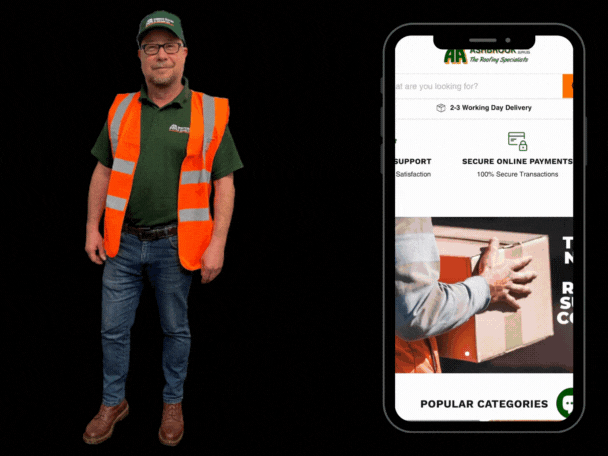2-3 WORKING DAY DELIVERY

How to Tell Good Slate from the Bad
Quality of roofing slate varies enormously. One good slate can look identical to another which could be beset with reactive minerals that start rusting after the first rainfall. Others can fade or change colour after installation, or even start to shale (separate) and allow water to penetrate into your building.
Trying to avoid these poor quality slates whilst maximising your value for money will be your key challenge when sourcing your slate. Worryingly many people leave this down to luck or to simply use what is available at their local builder’s merchants.
Often, the country or region of a slate’s origin is often used as a badge of honour in the roofing industry. The truth is that two slate quarries from the same country and located just a few miles apart will produce completely different qualities (and even colours) of slate. It is vitally important that you source your slate from a single named quarry, (ideally from the same batch), to ensure a uniform appearance and quality. If you are unable to visit your supplier, always request samples and take time to inspect them.
CE / EN 12326 standards: A1-S1-T1
The starting point for protecting yourself against purchasing poor quality slate is to make sure that it is certified to the top level of the CE / EN 12326 standards. Amongst other areas, this certification tests the slate’s water absorption, carbonate content, and thermal cycle resistance.
There are three levels of pass for each part of the test. A slate that is certified to A1-S1-T1 standards has achieved the highest level of pass on each test.
Be warned that the EN 12326 tests are quite lenient. Even middling quality Chinese slate with an expected lifespan of 30-40 years can achieve the same top-tier pass as given to a Welsh slate that has a 100 year plus life expectancy. The certification should be treated as proof that the slate meets the bare minimum requirements, rather than as an indicator of high quality.
Beyond EN 12326
By looking beyond the EN 12326 standard, an educated buyer can take their appraisal of slate a step further to help ensure that they are getting the best quality and best value for their money. The following pointers will help you understand the difference between your roofing slate samples:
Grain – slate is cut from rock that was formed by the laying down of sediment in ancient seas many millions of years ago. These layers of

Welsh Blue Grey Slate
sediment have since been compressed (and in the case of most slate, heated by geothermic conditions) until the layers of sediment lie closely packed against one another.
Because the rock still retains these layers, it allows the quarry to split the rock into slates of a consistent thickness. Agood slate will split cleaner, be of similar thickness to one another and have minimal coddling (twisting) of the slate being evident.
You can get an indication of how well your slates will lie (and how much sorting may be required) by taking a good size handful of slates and squeezing them at each end. If the slates rock against one-another as you squeeze them, then this is a sign that there are coddled slates or slates of varying thicknesses within the sample.
A second grain running down the face of a slate is also evident in most slate. The very best quality and strongest slates will have a vertical grain that runs straight from top to bottom of the face of the slate. A grain that twists, swirls, or falls horizontally part of the way down the slate indicates that the slate may not be as strong or durable.
Inclusions - All slate includes amounts of non-carbonate inclusions. First clarify by looking at the test certificate to see if these inclusions are reactive to water (T2 or T3) or non-reactive to water (T1).
A reactive (T2 or T3) inclusion will rust or discolour, possibly forming dirty streaks down your roof. In the case of a T3 slate, the inclusions may rust away completely leading to leaks and cracks throughout the entirety of your slate roof.
Secondly look to see if any inclusions spoil the slates ability to lie flat, and lastly appraise the overall appearance of the slate. Inclusions are normally silver or gold in colour, and can vary in size between a grain of sand and a small pea. The most desirable slates have no visible inclusions – because this is extremely rare, they command a higher price.
Colour - Slate colour ranges from green to purple, grey to black. Because Welsh slate was used to cover much or world’s roofs in the 18th and 19th century and proven to be the very best slate in the world, the two most sought after colours are particular shades that match the Welsh blue-grey and heather-purple. Unfortunately for those aspiring to purchase slates in these colours, they are only available in limited numbers from one or two quarries located in Wales, Spain and Canada. As demand often outstrips supply, they command a high price.
Sound - A good slate will ring true when tapped with the knuckle. Avoid those that when tapped, sound dull or those that rattle.
Brittleness - A brittle slate is weaker and more likely to shatter, especially during installation. During fitting, slates are cut to provide a good fit at the gable end of your roof, around chimneys, dormer windows and along your roof valleys. The most desirable slates are ones that are ‘soft’ enough to cut with slate cutters.
It is unrealistic for the inexperienced to measure how brittle a slate is. However by choosing a specialist roofing supplies merchant (especially one that is linked to the National Federation of Roofing Contractors), you are more likely to get better advice and a better slate.
Size matters:
When choosing a good slate for your roof, size too is important. Slate is disproportionally more expensive the larger size you select. However a smaller (cheaper) slate will require more time and more materials to install. If your finances are limited but time plentiful, a smaller slate may offer you better value for money.
On a final note, remember that the beauty of slate lies in the fact that it is a natural and unique material – no two slates and no two slate roofs will ever look identical. Experienced roofers expect to have to do a little sorting of the slate before they take it up to the roof and will not be surprised to find a small proportion of twisted (coddled) or cracked slates in every pallet.
If you desire every slate to be perfect and every slate to be identical to one another, a man-made slate manufactured from plastic, fibre cement or slate dust & resin, will probably meet your needs better.
Here at Ashbrook Roofing we sell a large range of quality new and used slate. To see what we have to offer: Click here
You may also be interested in:






Stay Connected With US
Address
Harrison Way, Matlock, Derbyshire, DE4 2LF
Email
sales@ashbrookroofing.co.uk
Phone
01629 732988
Order Online
24/7 hours a day

